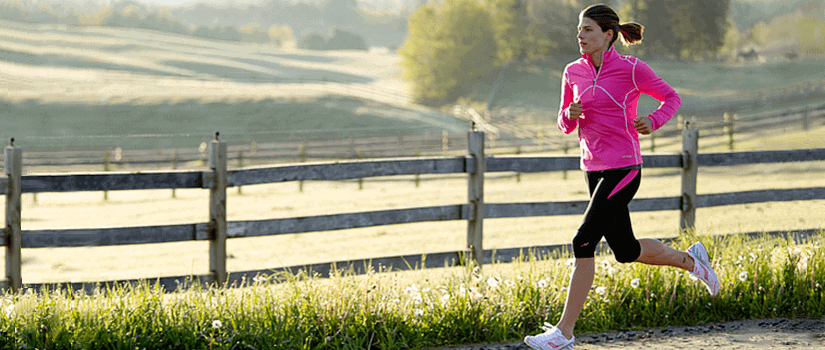
Activity Levels On The Rise
Female participation in sport and physical activity has been under the spotlight recently, thanks in part to campaigns such as This Girl Can by Sport England – a promotion of active women across the UK who are getting involved in sport and exercise, regardless of age, appearance, or level of ability. The campaign aims to encourage those who may have felt self-conscious or unsure about lack of skills to join in with the public debate and share their experiences, fears and goals with others. With this in mind, Sport England created several inspirational video clips showing regular women engaged in a range of different activities from spinning class to kickboxing. The videos quickly went viral, building a fast growing network of support across the internet. But has the campaign had any real impact on levels of physical activity among women?
It is still early days, but so far the answer appears to be ‘yes’. In March, the number of girls’ sports team in private schools had already doubled following the drive to encourage girls to copy their female sports idols in order to combat prevalent body image issues amongst teens. Following the success of the Olympics, many independent schools invited various female sports stars to coach their students. The headmistress of Cheadle Hulme School, Lucy Pearson (The Telegraph, 2015), noted that having high profile female role models who are not stick thin, but working hard and sweating, helps to challenge the view of ideal feminine beauty. Rather than emulating the typical waif-like figures of catwalk models, there is a change towards a sportier, muscular physique as the new ideal. Strength and fitness is now in fashion. The number of sports teams for girls has doubled due to increasing demand, and the school has now introduced programmes that focus on conditioning and body training, traditionally seen as a male activity, to challenge preconceptions and persuade girls that women can be both athletic and feminine. The situation at Cheadle is mirrored by data from the Headmasters’ and Headmistresses’ Conference (of 169 schools) that showed very high levels of participation of girls in sports such as netball and hockey, and an average 5.4 hours a week played in over 40 sports. Is this improvement as a direct result of the campaign? It is difficult to say, but what is important is that the increase in participation is sustained and continues to improve.
Spotlight on Women’s Activity
Greater awareness of women’s sport and activity is being hailed as a factor in driving increased involvement. Figures from this year’s 8-week Workplace Challenge (2015) showed a 13 per cent rise in activity levels amongst female employees in comparison to the same period last year. Workplace Challenge is a team-based approach created with the aim of helping women who lack free time to fit physical activity in and around their workday – from walking to work, to lunchtime runs and after hours netball competitions. The increased focus on female participation has helped this shift in statistics towards a more active female population.
Recently, more attention has been given by the media to female sports personalities such as Clare Balding, who gave a speech to young schoolgirls at this year’s Inspiring Women in Sport (2015) event. Discussing her time in the sports industry, Balding highlighted the numerous jobs available to young women from event managers to sport lawyers, and advised the girls not to limit their ambitions and instead to view sport as a credible career path. Employment minister Esther McVey backed this view, stating that girls should consider sport as a career and not just a hobby. McVey is currently promoting the campaign #NotJustForBoys, which encourages young women to consider careers in industries where they are under represented, such as engineering, construction and sport. McVey highlighted the difficulty that girls still face in certain industries due to a persisting stereotype that sport careers are ‘for the boys’, but argued that girls need to fight back and challenge these misconceptions, and having female role models within the industry made a huge difference. There are still some areas, such as sports broadcasting, that women haven’t yet crossed into. But events such as Inspiring Women that bring together young girls with women already successful in the sports industry aim to change that in the future.
References
- The Telegraph (2015) ‘Girls sports teams at independent schools on the rise, says headmistress’. Available at: https://www.telegraph.co.uk/education/educationnews/11490896/Girls-sports-teams-at-Independent-schools-on-the-rise-says-headmistress.html [Accessed March 25th 2015].
- Workplace Challenge (2015) ‘Workplace Challenge providing a solution for women to get active in the workplace’. Available at: http://www.workplacechallenge.org.uk/news/2015/02/workplace-challenge-providing-solution-for-women-to-get-active-in-the-workplace [Accessed March 30th 2015].


[…] This Girl Can Campaign Gathering Momentum […]
I really believe that mixed gender PE classes are essential to promote such campaigns as this. The more I look for reasons to justify segregation based on gender, the more I struggle to find any.
[…] may also enjoy the following blogs on Exploring Class Grouping, the This Girl Can campaign, Engaging Disengaged (female) Students, and engaging pupil voice to better understand PE […]